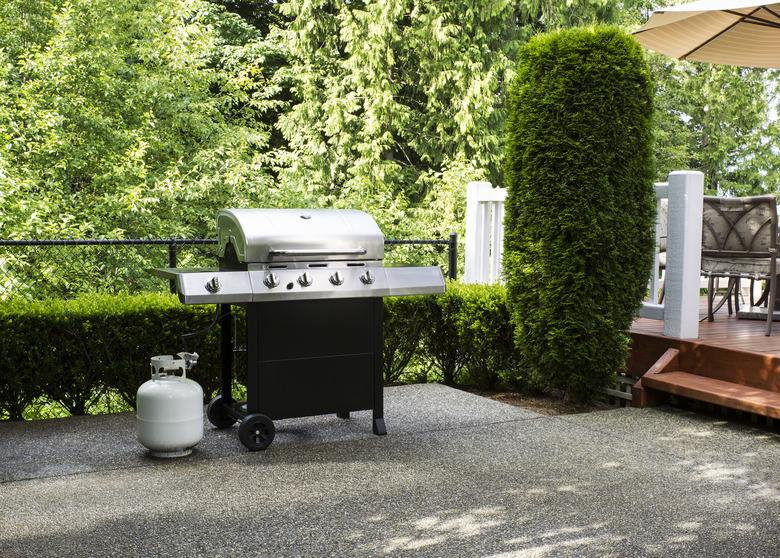How To Disconnect The Propane Tank From A Grill
We may receive a commission on purchases made from links.
According to the National Fire Protection Association, leaks or breaks in containers or pipes account for 19 percent of all home grill fires and 31 percent of the injuries associated with these fires. Given the serious dangers associated with a leaking or broken propane tank or pressure regulator, it is very important that you take proper care when removing and transporting your propane tank. While the process is simple, it's important to keep safety in mind to minimize your fire risk.
Is the Tank Empty?
Is the Tank Empty?
You don't have to wait until your tank is completely empty to replace it, but it can sometimes be hard to tell how full it is until it runs out. You certainly don't want to run out of gas in the middle of cooking if you can avoid it, but you also don't want to waste time and money refilling or exchanging a tank that's mostly full. If you want to refill the tank before it's fully empty but aren't sure how full it is, you can purchase a propane gauge that can be connected between the tank and the regulator, or you can use a propane scale gauge that estimates how full a tank is based on weight. Alternatively, you can buy an extra tank so you have propane ready to go when your first tank runs out.
How to Disconnect a Propane Tank From a Grill
1. Turn Off the Gas
Check that all the knobs on the grill are set to the off position. Identify the location of your propane cylinder, which is usually underneath the grill and occasionally located behind metal doors. Turn the propane cylinder's valve knob clockwise as far to the right as possible to shut off the gas flow.
2. Disconnect the Propane Tank
Turn the threaded pressure regulator clockwise until it unscrews from the tank. For some grill models, this is all you need to do to disconnect the tank, and you can simply lift the tank from the grill. Other grill designs may feature a propane tank secured with a rotating arm that simply needs to be lifted from the tank, and some have a restraining bolt or screw that needs to be loosened by hand or with a crescent wrench.
Tip
If you have any difficulties locating your propane tank or learning how to disconnect it once the pressure regulator has been removed, look up this information in your owner's manual.
Transport Your Tank
Transport Your Tank
Whether you have a refillable propane tank or use a propane tank exchange service, you'll need to transport the tank to get more propane. Because these tanks may still hold some amount of propane, exercise caution while moving them. When transporting a propane tank, always keep it upright and store it in a well-ventilated area inside the car away from direct sunlight. Go directly to the refill or exchange location and never leave your tank unaccompanied in the vehicle.
